|
Related FAQs: The
Fishes of the Cook Islands,
Coverage of families in the Cooks: Surgeons, Doctorfishes, Tangs, Triggerfishes,
Hawkfishes, Wrasses
Related Articles: Introduction to Fishwatcher's Guide
Series Pieces/Sections,
/Fishwatching: Adventure Travel Series
Pet-Fishing in the Cook
Islands
Long Version, Pt.
IV
To: Pet-Fishing in the Cooks, Short Version,
Longer Version: Part I, Part II, Part III,
Part V
|
|
|
Apogonids in the Cooks >v
Only six species found here, some shallow
water… but not beautiful.
vApogon kallopterus
vCheilodipterus macrodon
|
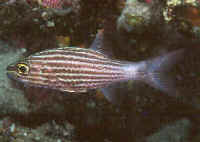
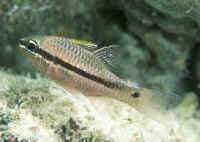
|
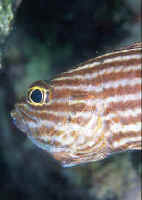
|
|
>Balistids/Triggers N=14!
Not a mis-print, there are fourteen species of triggerfishes
found in the Cooks:
Balistapus undulatus, Balistoides viridescens, Canthidermis
maculatus, Melichthys niger, Pseudobalistes flavimarginatus, P.
fuscus, Rhinecanthus aculeatus, R. lunula, R. rectangulus,
Sufflamen bursa, Xanthichthys caeruleolineatus, X. mento
A few examples shown. Can you identify these to species?
|
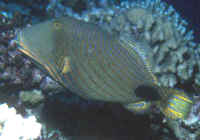 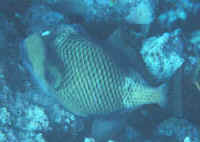
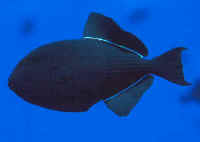 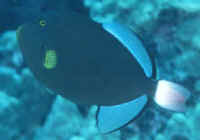
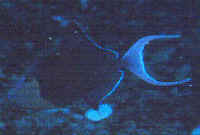 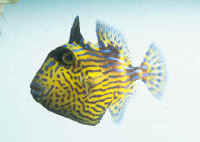
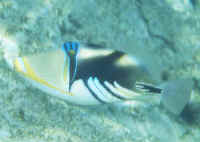 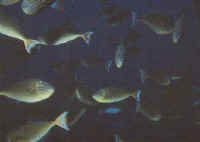
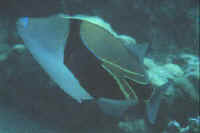 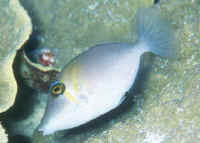
|
| Blennioids >
vN= 15, but not many even of this small
number of species to be found… and very hard to catch here
due to topography. One to definitely avoid. Here's the
fish and diver biting Piano Fangblenny, Plagiotremus
tapenisoma. The area also has the Common Cleaner Mimic Saber
Tooth Blenny, Aspidontus taeniatus. No thanks. |
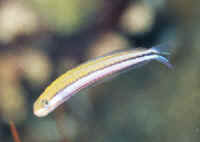
|
>
| >Gobioids in the Cooks >vAbout
same depauperate, availability, catchability as blennioids here. N=
17, only a couple of species of Valenciennea’s are used by
the trade. |
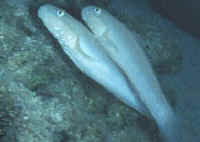 
|
|
>Carangids, Jacks
>vBetter
as game fish… the fishing is excellent here.
vN=23, with one used commonly in our interest:
Gnathanodon speciosus
|
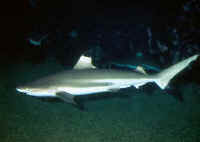 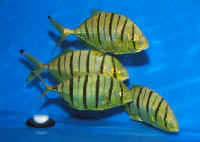
|
|
>Carcharhinid Reef Sharks
v
N= 10, all unsuitable for hobby use.
vMany sharks at unpopulated northern island group. Not
many down south. Shown: Carcharhinus amblyrhynchos, C.
melanopterus, Triaenodon obesus.
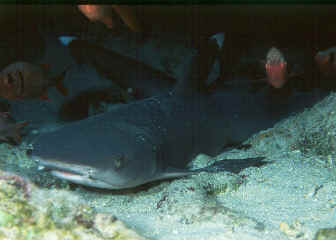
|
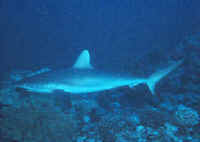

|
|
>Butterflyfishes: Good ones:
Shown: Chaetodon auriga, C. mertensii, C. ulietensis,
Forcipiger flavissimus.
|
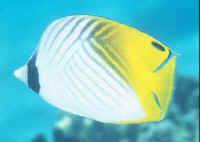 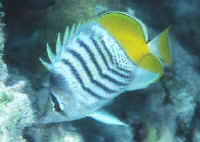
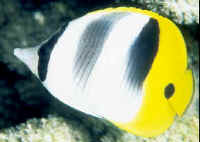 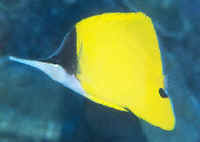
|
|
>More Good Cooks B/F’s
Shown: Forcipiger longirostris, Hemitaurichthys polylepis,
Heniochus acuminatus, H. chrysostomus.
|
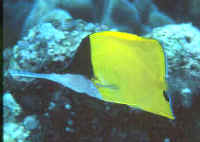 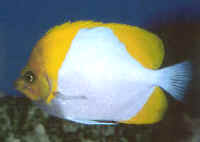
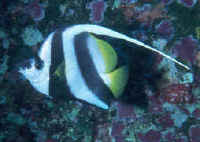 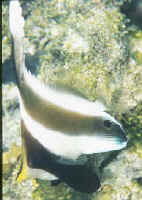
|
|
|

